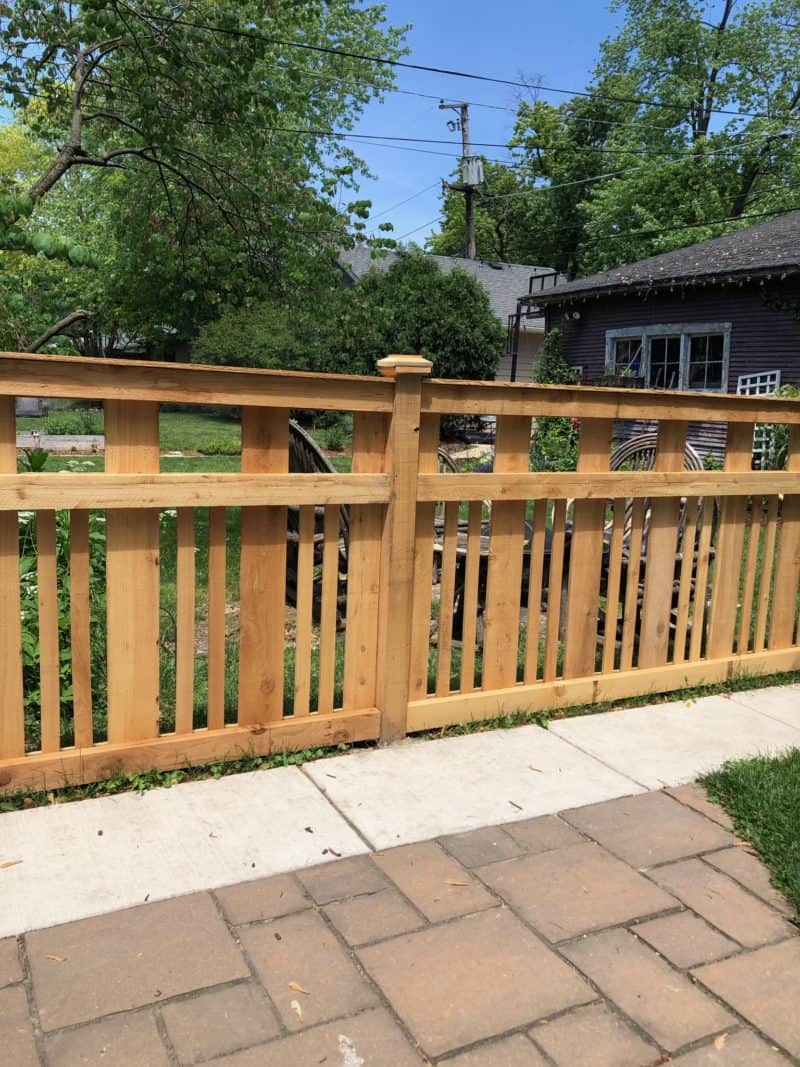All Categories
Featured
Setting up a fence around your building is a significant investment that requires correct preparation and prep work to ensure a smooth procedure. Whether you're adding a fencing for protection, privacy, or aesthetic appeal, taking the needed actions before installment can help prevent problems down the line. Below's a guide on just how to prepare your property for fence setup and make certain everything goes according to plan.
![]()
![]()
![]()
Conclusion. Appropriate prep work is essential to a successful fencing setup. By putting in the time to establish your residential or commercial property lines, clear the setup area, look for underground energies, and connect with your next-door neighbors, you can make sure that the process goes smoothly and stay clear of unforeseen complications. With the right preparation, your new fence will not only improve your home's look however likewise give the security and privacy you need.
- Know Your Residential Property Borders. The first step in preparing your residential property for fence installation is determining your property lines. It's crucial to recognize where your limits are to prevent installing the fencing also close to your neighbor's home or also on their land.

- Understand Regional Laws and Permits. Various locations have various regulations regarding fencing elevation, products, and placement. Be certain to adhere to all neighborhood guidelines to stay clear of charges or having to take the fence down after installment.
- Clear the Fencing Line. Once you have actually established where the fencing will go, you'll need to remove the location. Eliminate any type of greenery, trees, rocks, or debris that might block the fencing setup procedure. Take into consideration trimming or eliminating them to make the location more easily accessible if there are thick plants. Cleaning the location makes certain that the fence installation can proceed without delays and helps to protect against damage to plants you may intend to keep. Consider whether any type of grading or leveling is needed. if the fencing line is on sloped or irregular ground.
- Mark Underground Utilities. Prior to you start digging message openings, check for any kind of underground energies such as water pipes, gas lines, or electric cable televisions. Exploring these energies can be unsafe and expensive. Many locations have a "phone call before you dig" service that can mark the locations of underground lines for free. Get in touch with your neighborhood energy business to make certain that no below ground energies will certainly hinder your fence installation. This step will certainly help prevent mishaps and hold-ups throughout the installation process.
- Review with Next-door neighbors. Installing a fencing on a common property line or near a neighbor's home requires open interaction to avoid conflicts. It's a good idea to notify your next-door neighbors regarding your fencing intends in advance. Go over the fencing's place, elevation, design, and products, specifically if the fence will be on or near a boundary line. Having a pleasant conversation can aid prevent differences or misconceptions later on and may even result in a much better design that helps both events.

- Pick the Right Fencing Kind and Material. Selecting the best type and product for your fencing is an essential action in preparing for installment. Consider variables like the purpose of the fencing (personal privacy, safety, visual appeals), neighborhood climate condition, and the quantity of upkeep you want to do. Common products include timber, light weight aluminum, vinyl, and chain web link, each offering special benefits. As an example, timber fences offer an all-natural aesthetic yet call for more maintenance than vinyl or light weight aluminum options. Take some time to study which product best fits your needs and budget plan.
- Establish a Realistic Spending Plan. Fencing projects can differ in expense based upon materials, dimension, and the intricacy of the setup. Prior to starting, develop a spending plan that consists of all possible costs-- materials, labor, allows, and any kind of unexpected costs. If you're working with specialists to set up the fence, ask for quotes from multiple service providers to ensure you're obtaining a reasonable cost. Factor in the lasting maintenance costs of the fence to ensure that the type of fence you pick fits within your general spending plan.

- Get Ready For Setup Day. As installment day methods, make certain that your residential property awaits the job to start. Make certain the location is free from personal products like yard decors, yard furniture, or outside tools. Maintain them securely away from the setup area if you have pets or young kids. You must additionally guarantee there suffices space for the contractors to park their cars and store devices throughout the work. By preparing the area for the staff, you can help make certain that the installation goes as efficiently and successfully as possible.
Conclusion. Appropriate prep work is essential to a successful fencing setup. By putting in the time to establish your residential or commercial property lines, clear the setup area, look for underground energies, and connect with your next-door neighbors, you can make sure that the process goes smoothly and stay clear of unforeseen complications. With the right preparation, your new fence will not only improve your home's look however likewise give the security and privacy you need.
Latest Posts
Explore WyHy FCU – Low Rates for Members
Published May 27, 25
1 min read
Uncover Cost-Effective Auto Repairs with Montclare’s Limited-Time Service Specials
Published May 23, 25
1 min read
Explore Montclare Auto Repair’s Premier Services and Why Drivers Trust Them
Published May 23, 25
1 min read
More
Latest Posts
Explore WyHy FCU – Low Rates for Members
Published May 27, 25
1 min read
Uncover Cost-Effective Auto Repairs with Montclare’s Limited-Time Service Specials
Published May 23, 25
1 min read
Explore Montclare Auto Repair’s Premier Services and Why Drivers Trust Them
Published May 23, 25
1 min read